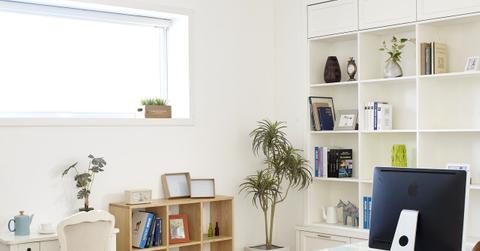Singapore Researchers Develop Air Conditioner That Uses 40% Less Energy
We've been using the same air conditioning technology for over a century in our homes. A group of researchers from Singapore have created a game-changing process that uses water-based technology that could change the future of cool comfort.
Updated May 23 2019, 10:09 a.m. ET
Air conditioning is a great example of technology that many of us utilize, but there hasn’t been much progress to improve it. That’s about to change with a new system created by researchers at the National University of Singapore. Their water-based air conditioner doesn’t use any mechanical compressors, saves on electricity, and it can even save drinking water.
The development of this new air conditioning system was spearheaded by associate professor Ernest Chua at the NUS Faculty of Engineering. It operates with 40 percent less electricity needed than traditional air conditioners. Therefore, over 40 percent of carbon dioxide emissions are reduced, immediately making a significant difference for the environment.
How is it able to function with less energy? It divides up the process of removing moisture in the air and cooling it, making energy use more efficient. Instead of using chemical refrigerants like chlorofluorocarbon, it uses a dew-point cooling technology that removes moisture from humidity outside and cools the dehumidified air. Air that’s less humid than the environment is released, meaning it’s very adaptable for any type of weather condition.
“Our cooling technology can be easily tailored for all types of weather conditions, from humid climate in the tropics to arid climate in the deserts,” Professor Chua said in the school’s news release. “While it can be used for indoor living and commercial spaces, it can also be easily scaled up to provide air-conditioning for clusters of buildings in an energy-efficient manner.”
Chua adds that the new air conditioning system’s dehumidifying process would be ideal for small, confined spaces like underground bunkers and shelters. On top of less mechanical parts and no chemical refrigerants, an added benefit of the process is creating up to four gallons of safe drinking water each day.
Traditional air conditioners have been using a vapor compression process invented in 1902 by Willis Carrier. This was created to solve a heating problem at a printing company in Brooklyn, New York, but has expanded into how must of keep cool during hot summer months. The process is over a century old now, and we’ve learned how much energy it uses since.
What are the next steps for the new technology? Making it more presentable to the user and adding smart features. The research team hopes to add thermal settings based on how many people are in the building and ways to track how efficient the system is using energy. They also hope to collaborate with others to help produce and sell the product on a large scale.
Chua notes in the school’s news release that with the benefits, this new system could be the future of air conditioners: “This is a new starting point for the next generation of air-conditioners, and our technology has immense potential to disrupt how air-conditioning has traditionally been provided.”
